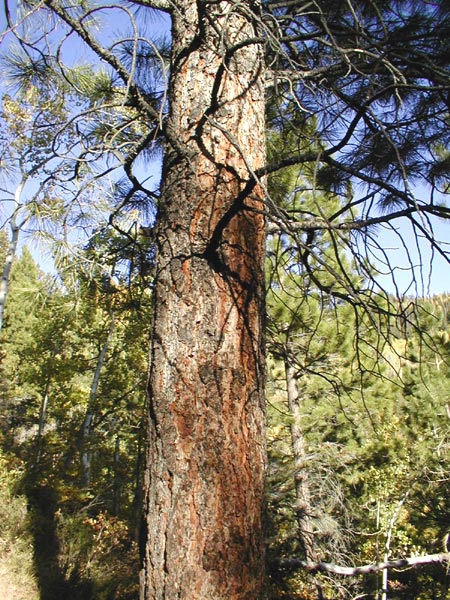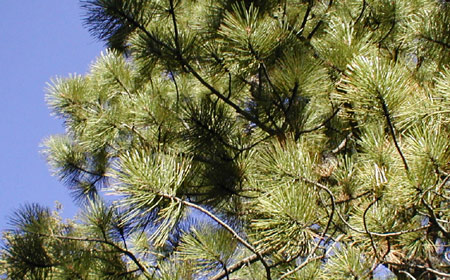Ponderosa Pine
Pinus ponderosa
Family: Pinaceae or Pine
Leaves: Needles in groups of 2 and 3; 3" to 10" long; yellow-green; less sharp-pointed than those of Austrian pine; somewhat twisted; evergreen, remain on tree 3-6 years.
Twigs/buds: Twigs stout; orange-brown; smell like turpentine when crushed. Buds about 1/2" long; usually covered with resin droplets; cinnamon-brown colored.
Flowers/fruit: Fruit a woody cone; very short to no stalk; 3" to 6" long; reddish-brown; each scale armed with a short, sharp spine.
Bark: Dark brown to black on younger trees; older trees have large, thick plates, orange to cinnamon-red, separated by deep furrows; inner bark has vanilla smell.
Wood: Very important; sapwood white to yellow; heartwood yellow to light brown; growth rings distinct; used for lumber, millwork, and railroad ties.
General: Native to mountainous areas in southern two-thirds of Utah and throughout the West. Normal growth rate is relatively slow. Resists fires with thick bark. Drought resistant. Shade intolerant.
Landscape Use: Occasionally planted when a large, long-needled pine is desired in the landscape. Austrian pine is similar in appearance and more readily available in nurseries. Zones 3-7.







